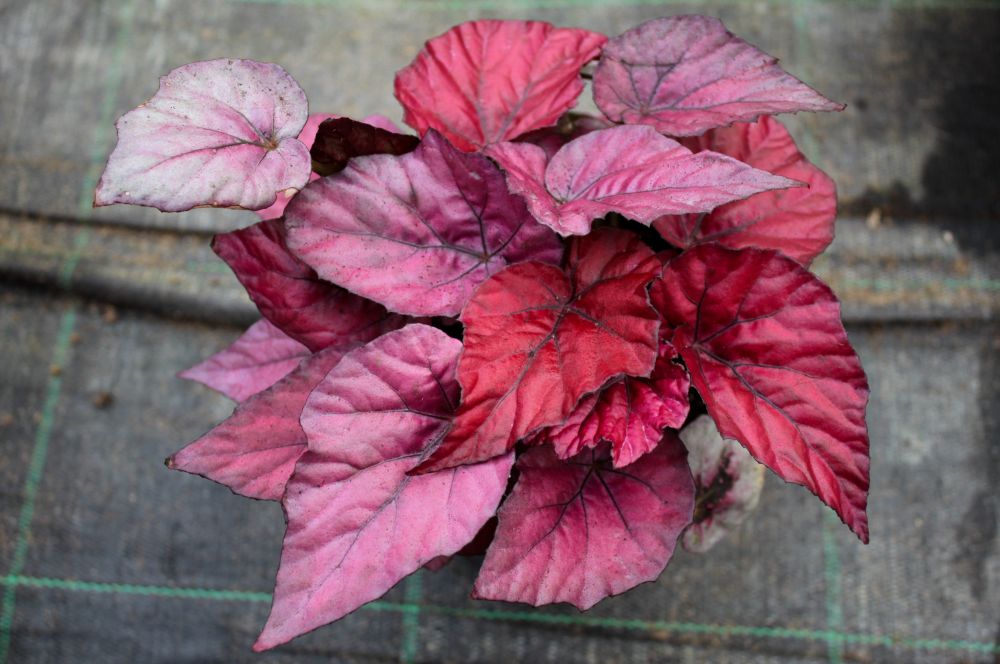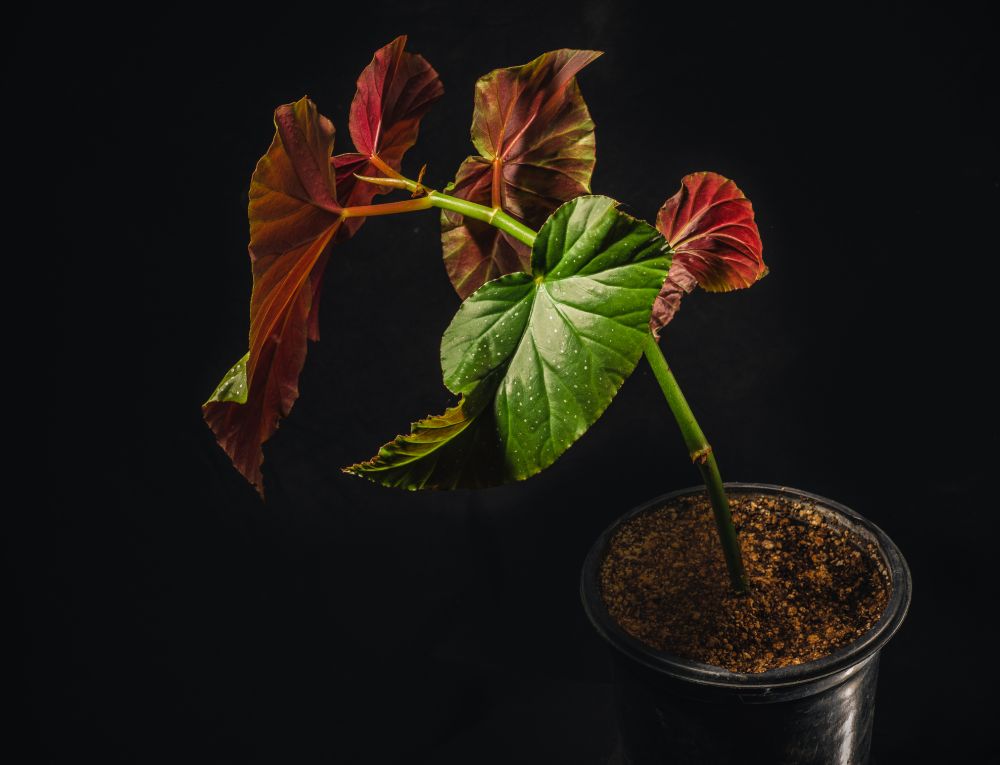Angel Wing Begonia Care: How To Grow Angel Wing Begonia
Angel wing begonia is the type of ornamental plant that looks like bamboo sticks but tastes like a nectarine. And by taste, I mean the flowers. Not only are the flowers of this ornamental house plant eye-catching but they are edible as well. Even if you’re averse to eating flowers, they make a delicious herbal tea, especially on a chilly night. Summer evenings will pass better with a pitcher of begonia iced tea by your side.
But apart from their culinary uses, angel wing begonias are easy to grow and their decorative qualities make them the go-to houseplants. So if you’re serious about your houseplants, this one should be at the top of your list this summer. Read on to find out how to grow and care for the showy angel wing begonia.
Angel Wing Begonia at a Glance
Angel wing begonia is a member of the cane begonia group. These are hybrids that resulted from cross-breeding different begonia subspecies. Originally from California, the angel wing begonia cultivar is what you get when you cross Begonia aconitifolia and Begonia coccinea.
The cultivar is best suited for the warm growing zones above 10. Ideally, if you live in zones 10 or 11, you won’t have a problem with this unique begonia. However, people growing it in zone 12 reported some issues with lack of flowering and leaf brown tips.
The average plant reaches about 10 feet high. That’s quite tall by houseplants standards. It also means you need a large container to grow it since the begonia has a robust root system to match. And while the stalks of the plant are nothing more than canes that look like bamboo stems, the foliage and blooms are a sight for sore eyes.
The large dark green leaves have the shape of angel wings, hence the name. As for the flowers, they usually open up in the summer. They grow in clusters of small drooping flowers that glow in bright red or striking pink. The petals have a waxy feeling to the touch and taste quite sweet.
If you have never grown a begonia before and want to start with one hybrid, the angel wing begonia is that one.
Begonia Varieties
Begonias are a vast and wonderful world of many subspecies, varieties, and cultivars. It can be intimidating for a beginner to even choose a variety to grow. That’s because begonias come in different shapes, colors, and types. But rather than go through each one or list the most popular varieties, we’ll classify them by type. That will help you make the right choice for your home based on the space available and growing conditions.
- Cane Begonias: These begonias are usually evergreens and have prominent and tough stems. Most varieties that belong to this type bloom either in the fall or the winter. These houseplants add an exotic appearance to your home. Most popular cultivars in this category include angel wing begonia, dragon begonia, and Superba.
- Tuberous Begonias: Unlike cane begonias, tuberous begonias are more suitable for the garden and outdoors. You can grow them on the patio or near the gazebo to create a wild ambiance. They have upward and colorful flowers that bloom right in your face. The flowers open in the summer and stay for weeks before they fade. But once the flowers have dropped by the end of the summer, the plants shed their leaves and go into dormancy. This lasts through the fall and winter.
- Rhizomatous Begonias: An evergreen subspecies just like cane begonias. However, this type has more foliage growth than flowers. The flowers are rather small and insignificant in the vast swaths of dark green and variegated leaves. And since they keep their foliage all year round, you’ll have highly ornamental plants that maintain their colorful and rather eccentric looks no matter the season.
How to Grow Angel Wing Begonia
Although angel wing begonia has eye-catching flowers that produce seeds, you’re better off growing them from cuttings. This approach gives you many advantages since you’ll have the same plant as the parent cultivar and a cutting grows faster than a seed. Seeds on the other hand are rather tricky and deceptive, especially with cultivars. The plant that grows out of a seed rarely resembles the parent plant. With that in mind, follow these steps to grow the angel wing begonia from cuttings.
- Start your new plant in the spring right around the time established begonias grow new leaves and stems.
- Find a mature angel wing begonia and select a new shoot that doesn’t have any blooms on it.
- Cut 6 inches of the stem using a sterilized blade. Make your cutting at a 45-degree angle.
- Place the end of the cutting in root growth hormone before you plant it.
- Fill a medium-size pot with plenty of drainage holes with regular potting mix.
- Dig a hole in the middle about 2 inches deep and plant the cutting after shaking off the excess hormonal powder.
- Water the soil immediately and keep it moist until roots grow out of the cutting.
- Place the pot near a window that gets plenty of light without exposing the cutting to direct sunlight.
- Maintain temperatures between 65 to 70 degrees F all year round for the begonia to flourish. Cold temperatures will not facilitate the growth of the cutting.
- Humidity is important for the success of your begonia. High humidity levels above 70 percent will improve the chances of flowering.
- After about 3 to 4 weeks, new growth will emerge from the top of the cutting.
- The best places in the house for the begonia are in the kitchen and bathroom since humidity is always high in these places.
- If you want to keep your begonia in the living room, place a humidifier next to the plant and keep the pot near a window facing west or south.
Angel Wing Begonia Care
One of the many reasons you’d want to grow an angel wing begonia is that it is hardy, has a high tolerance to different growing conditions, and it can handle the rough and tumble of the indoors. So whether you have a precocious dog, an inquisitive cat, or a playful child, your begonia will stoically take the punishment without showing any signs or scars. As long as you have the space for it and provide adequate light and humidity levels, it will reward you with bright flowers and angelic foliage.
Soil
Unlike many other houseplants, angel wing begonia prefers heavy or clayish soil. This has to do with the nature of the root system of the plant. A ten-foot house plant has a robust root ball to support its hefty bulk and foliage. So heavy soil will keep that giant of a plant firmly rooted to the ground. Don’t use sandy or loamy soil since the top-heavy plant would topple over. Mix a lot of organic materials to improve the drainage of the soil. This begonia doesn’t like to sit in a puddle of water since that leads to root and crown rot. To avoid that unfortunate outcome, choose a pot made of terracotta as it allows the soil to breathe. Plastic containers are not recommended.
Water
You might have noticed while reading the how to grow section how we stressed the importance of humidity for the success of angel wing begonia. That’s because moisture is crucial for the survival of this begonia both above and below ground. The soil needs to be constantly moist. This means you can’t allow the top couple of inches of the soil to dry out. That will reflect almost immediately on the flowers and leaves of the plant. Drooping and yellow leaves are a symptom of a begonia struggling with drought. And since the plant is growing in a container, the soil loses moisture at faster rates than the soil in the garden. To be on the safe side, water the plant every day.
Fertilizer
As you would expect, the soil in the container has limited nutrients. And these nutrients will get depleted anyway by the time the angel wing begonia has reached one foot tall if not earlier. Feeding is very much a basic chore when it comes to caring for this begonia. Start side-dressing the plant as soon as it has a few leaves growing at the top. Although organic compost is preferred, the odors might not be pleasant for a house plant. So use a balanced 10-10-10 fertilizer for the first few months. Once the bamboo-like stems have shown prominence, you can switch to a custom 5-10-10 fertilizer. At this stage, you’ll need more phosphorus than nitrogen to encourage flowering. Apply the fertilizer once every couple of weeks.
Light
The most recurring complaint that people have about angel wing begonia is that the plant is not flowering. Since the blooms are part of the begonia’s charm, it can be frustrating to see the lack of color on the plant. Usually, lack of flowering is closely related to inadequate lighting. This house plant has rather complex light requirements. While it needs bright light, it doesn’t like direct exposure to the sun. So when placing it near a window, keep the pot out of the sun. Of course, a lace curtain will help filter sunlight and create the right dappled light for the satisfaction of the begonia. You can also place the plant in the shade of a tree or a large plant basking in the full sun.
Pests and Diseases
House plants attract pests and the angel wing begonia is no different in this matter. Aphids, whiteflies, mealybugs, and scale are common visitors. They usually leave behind telltale signs on the foliage in the form of tiny holes in the leaves and flower petals. Once you detect the symptoms of a pest infestation, take the plant outside. Hose the plants with a strong water stream to dislodge the lingering pests. Then spray the foliage and stems with neem oil.
Powdery mildew is a common disease due to the high temperatures and humidity the begonia is swimming in. Remove any infected leaves and improve the air circulation around the plant to prevent the recurrence of the infection.
Angel Wing Begonia Toxicity
This begonia is considered mildly toxic to animals but not to humans. The roots in particular are quite toxic and since these are the parts most accessible to pets, you’ll need to keep the plant out of reach. Symptoms of begonia toxicity among cats and dogs include excessive drooling, swelling of the mouth and tongue, and rash. In severe cases, the animal might start vomiting, choking, or display difficulty swallowing. You should seek immediate medical assistance to save the pet.

